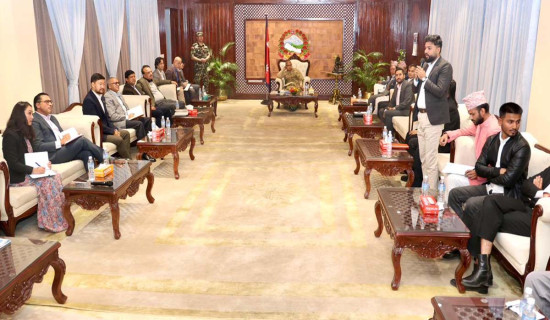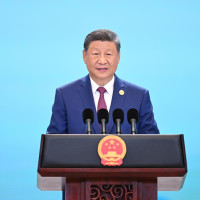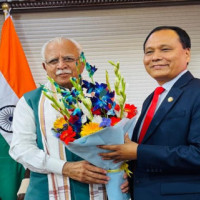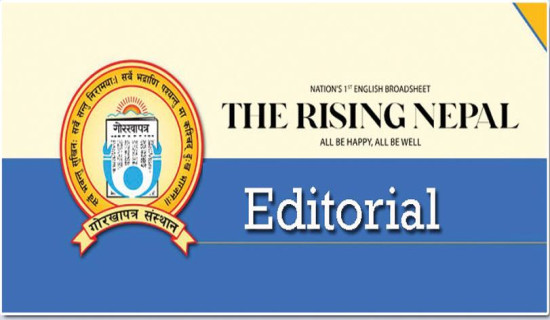- Wednesday, 29 October 2025
China Empowers Global Learners
China's education strategy, launched in 2012, has significantly boosted national development and become a model for other countries. China has made substantial progress by integrating education, science, and talent development, reducing educational inequality, and attracting international talent. This analysis will explore the strategy's key elements, global impact, and China's increasing role in international education.
Investing in people
In many countries, education is often underfunded or politically neglected. China took the opposite path. For over a decade, the government has committed to keeping its education budget above 4 per cent of GDP, an internationally recognised benchmark that is rarely achieved.
What is more important is where the money goes. A large share of China's education investment has been directed toward rural, remote, and disadvantaged regions. Between 2014 and 2018, the government invested hundreds of billions of yuan to improve school conditions in impoverished areas. Over 260,000 schools benefited, with new classrooms, labs, libraries, and digital infrastructure. Today, students in high-altitude towns in Xizang can attend live-streamed classes shared with schools in Beijing.
As a professor, I've seen how such infrastructure can change lives. But buildings alone are not enough. China also focused on teachers, offering living stipends, improved training, and better career development for rural educators. In total, more than 17 million training sessions for teachers have been held nationwide since 2012. Over 1.3 million teachers now receive rural service subsidies in central and western regions.
This long-term approach—focusing on both infrastructure and people—has created a more equitable and resilient education system.
Inclusive education
One of the most ambitious aspects of China's education reform has been its effort to reduce regional disparities. An innovative "east-west support mechanism" pairs leading universities and schools in the developed eastern provinces with counterparts in the west. This includes faculty exchange, resource sharing, and mentorship. Meanwhile, over 1 million college graduates have been recruited to teach in rural schools, especially in underserved areas such as western Sichuan, Xizang, and Xinjiang.
In some of China's ethnic minority regions, the government has extended compulsory education to 15 years, going beyond the national standard. But policy alone is not enough—access matters just as much as access on paper. Many areas, such as parts of Xizang, face extreme geographic and environmental challenges: high altitudes, low oxygen, harsh climates, and widely scattered populations. For children in such communities, the journey to school can be long and dangerous.
To address this, boarding schools have become an important solution. In Xizang, for example, schools offer students free meals, accommodation, and basic educational resources—a policy known as the "three guarantees." This approach is implemented in line with China's national education law and mirrors similar initiatives.
What's crucial is that boarding remains optional. Families can choose whether their children stay at school, and students can return home on weekends and holidays. Parents are even encouraged to be part of the school's planning and daily management, which helps ensure that cultural traditions and community voices are respected. In doing so, China aims to ensure that children of all ethnic backgrounds—not just those in cities—have a fair chance to access quality education. It's a recognition that inclusion means meeting students where they are, even if that's halfway up a mountain.
China has also expanded programmes to help children with disabilities attend school—raising the compulsory education enrolment rate for disabled children to over 95 per cent. A nationwide school meal program now serves 37 million rural students every year. Targeted admissions policies ensure students from poor and remote areas have pathways into top universities. These reforms reflect an essential lesson for all nations: education equity is not a luxury but a necessity for national progress.
Vocational and Higher Education with Future Education reform in China has not stopped at the school gates. Once seen as a second-tier path, vocational education is now being reimagined as a key driver of skills-based employment.
Vocational students can now earn professional certifications during their studies, preparing them for jobs in advanced manufacturing, healthcare, and digital industries. These programmes are developed in close collaboration with industry, ensuring real-world relevance. At the same time, China is investing heavily in higher education and research. Through the "Double First-Class" initiative, universities are equipped to compete globally in science, engineering, public health, and other critical areas. Academic partnerships with universities worldwide are growing, including in South Asia.
International students
One of the most meaningful changes in the past decade is how China has opened its doors to students from the Global South, especially from countries like Nepal. Thousands of Nepali students choose to study in China every year, drawn by affordable tuition, modern facilities, and growing academic diversity. Many Chinese universities—including my own, the University of Electronic Science and Technology of China—offer scholarships, mentorship programmes, and language support for Nepali students. I have had the honour of teaching Master of Public Administration (MPA) students from Nepal, and I continue to be inspired by their commitment to service and development. These students often return home with new perspectives and skills, becoming essential bridges between our two nations.
In my view, this is education diplomacy at its best—not based on politics or transactions, but on human connection and mutual learning. What can Nepal and other developing countries take away from China's education experience? First, investment matters—not just in numbers but in priorities. China didn't wait to become wealthy and invest in rural schools or vocational training. Early and deliberate choices laid the groundwork for today's success. Second, that equity is a strategy, not just a value. China created a larger, more skilled, and more cohesive workforce by closing the education gap between rich and poor regions. Third, openness is strength. China's embrace of international students and academic collaboration creates opportunities for itself and its partners. Nepali students in Chinese universities are learning new skills, forming networks, and building the future of Nepal-China relations. Among the key factors fuelling this trend is the generous availability of full scholarships the Chinese government offers. These scholarships cover tuition, accommodation, living expenses, and even international airfare, making quality education in China a dream and a reality for hundreds of Nepali students each year.
China's commitment to educational cooperation with Nepal is part of a broader strategy to foster regional integration, cultural exchange, and mutual development under initiatives such as the Belt and Road Initiative (BRI). These scholarships are not merely symbolic gestures—they represent tangible opportunities for talented young Nepalis to access world-class education in fields ranging from engineering and medicine to international relations and agriculture.
One notable example of China's efforts is in Chengdu, the capital of Sichuan Province, where the University of Electronic Science and Technology of China (UESTC)—a prestigious research university—actively recruits and supports Nepali students through special scholarship schemes. These include national scholarships provided by the Chinese Ministry of Education and local government and university-level grants tailored to attract students from South Asia. Nepali students from diverse socio-economic backgrounds are encouraged to apply. There is no restriction on academic major, and applicants are assessed based on their academic performance, language skills (mostly English), and commitment to fostering international understanding. Past recipients have completed postgraduate degrees, researched, and built professional networks spanning Asia.
The experience of studying in China offers more than just academic knowledge. It allows Nepali students to live in a vibrant, fast-developing society, explore culture and language, and develop cross-cultural communication skills that are highly valuable in today's interconnected world. Furthermore, with China becoming Nepal's second-largest trading partner and a significant investor in infrastructure and technology, graduates with firsthand experience of Chinese society and institutions are uniquely positioned to contribute to Nepal's development.
Importantly, the growing community of Nepali alumni of Chinese universities is creating new avenues for people-to-people diplomacy. Many graduates return home to serve in public institutions, NGOs, private companies, and universities. Others continue to act as informal cultural ambassadors, deepening ties between the two countries through professional and personal exchanges.
Chinese embassies and consulates in Nepal regularly organise information sessions, educational expos, and application workshops to support this growing interest. Nepali students are advised to explore the Chinese Government Scholarship (CGS) through the Ministry of Education of Nepal or apply directly to universities in China that offer institutional scholarships for international students. As the 70th anniversary of diplomatic relations between Nepal and China draws closer, these educational exchanges represent one of the most promising areas of bilateral cooperation. For Nepali students seeking high-quality education without financial burdens, China's expanding scholarship opportunities offer a compelling and practical path forward. Students and parents alike are encouraged to take full advantage of this opportunity—as a means of personal advancement and a bridge toward a deeper and more dynamic Nepal-China partnership. Investing in education is a top priority for China because it sees a strong workforce as key to its economic success.
(The author is a professor at the School of Public Administration, University of Electronic Science and Technology of China.)




-square-thumb.jpg)

-original-thumb.jpg)










